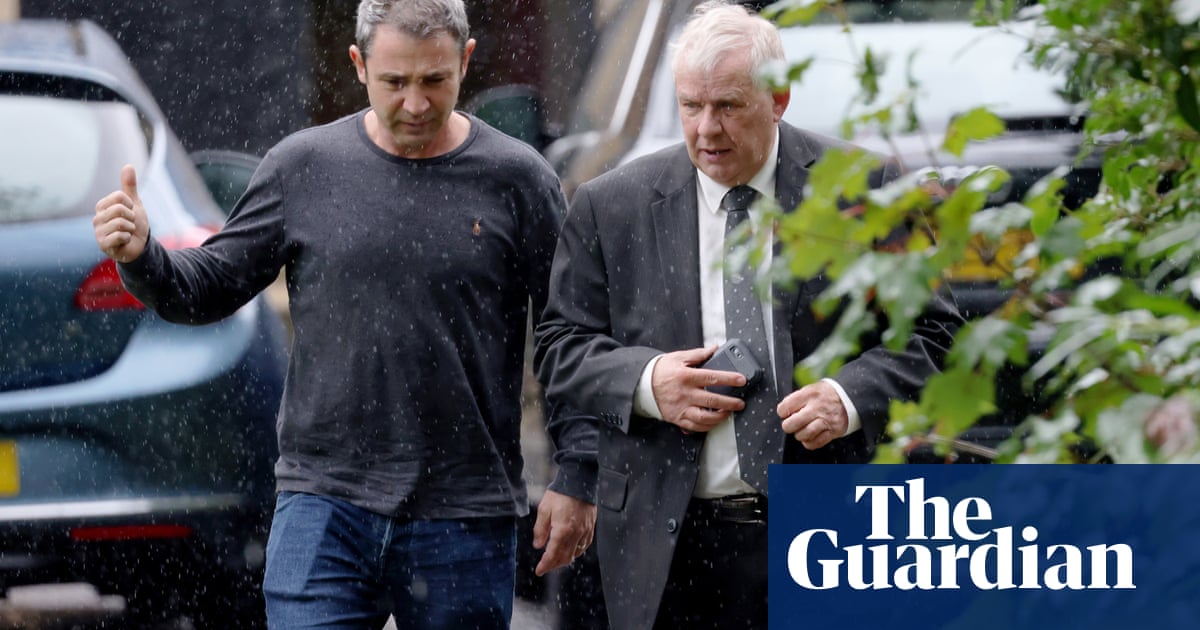
An Anglo-Saxon burial site containing the remains of more than 140 people interred with some of their most favoured objects, including jewellery, knives and even a personal grooming kit, has been discovered by archaeologists working on the HS2 route.
The site, near Wendover, Buckinghamshire, contained a “stunning set of discoveries”, said the historian Dan Snow. “Traditionally, this period has been dismissed as a dark age. But archaeology has filled the gaps.”
The findings would “tell us more about how our predecessors lived, fought and ultimately died”, he said. “It is one of the best and most revealing post-Roman sites in the country.”
One skeleton, a male aged between 17 and 24 at the time of death, was found with a sharp iron object embedded in his vertebrae, suggesting he suffered a violent death. Osteologists who have examined the skeleton believe a weapon was thrust into his body from the front before embedding in his spine.
A vivid blue stain on his collarbone came from a brooch used to hold up garments. Many of the site’s skeletons were found with two collarbone brooches keeping cloaks or peplos – long outer robes worn by women – in place.
One female skeleton was found with a vast array of goods, including a complete ornate pale green glass bowl thought to be made around the turn of the fifth century, indicating she was a person of high status. Other items found with her remains included rings, brooches, iron belt fittings and ivory objects.
The site contained 138 graves with 141 inhumation burials and five cremation burials, making it one of the largest Anglo-Saxon burial grounds uncovered in Britain. More than 2,000 beads were unearthed, along with 89 brooches, 40 buckles, 51 knives, 15 spearheads and seven shield bosses.
Dr Rachel Wood, the lead archaeologist for Fusion JV, the company that carried out the field work, said it was a “once in a lifetime discovery”.
“It’s rare to discover Anglo-Saxon cemeteries, especially with this many individuals – men, women and children – and an amazing range of grave goods. Almost all the individuals were buried with fantastically decorated brooches, but we’ve also found glass and amber beads, swords, shield bosses, spearheads, fantastically decorated pottery jewellery – quite a lot of unique objects.
“The fifth and sixth centuries are not ones we know a lot about, and all the objects we found will be able to tell us a lot about these people. It gives us a great snapshot of society.”
Most of the individuals appear to have been relatively wealthy, able to import some of the items from across Europe. Two glass cone beakers that were uncovered intact would have been used to drink wine brought to England from abroad. The beakers are similar to ones that were made in northern France, although some were also made in England at the time.
The discoveries include personal grooming items, such as ear wax removers, toothpicks, tweezers, combs and a tube that may have contained a cosmetic such as eyeliner.
A team of 30 archaeologists worked on the site for almost a year, completing field work in 2021. As well as the Anglo-Saxon burial ground, evidence of Neolithic, bronze age, iron age and Roman activity was discovered.
The HS2 route has proven rich in archaeological finds. More than 1,000 archaeologists have worked on 60 separate sites between London and the West Midlands over the past three years.
Objects that have been unearthed will be preserved and many will eventually be displayed in museums. But larger finds will be bulldozed to make way for the new rail line.












